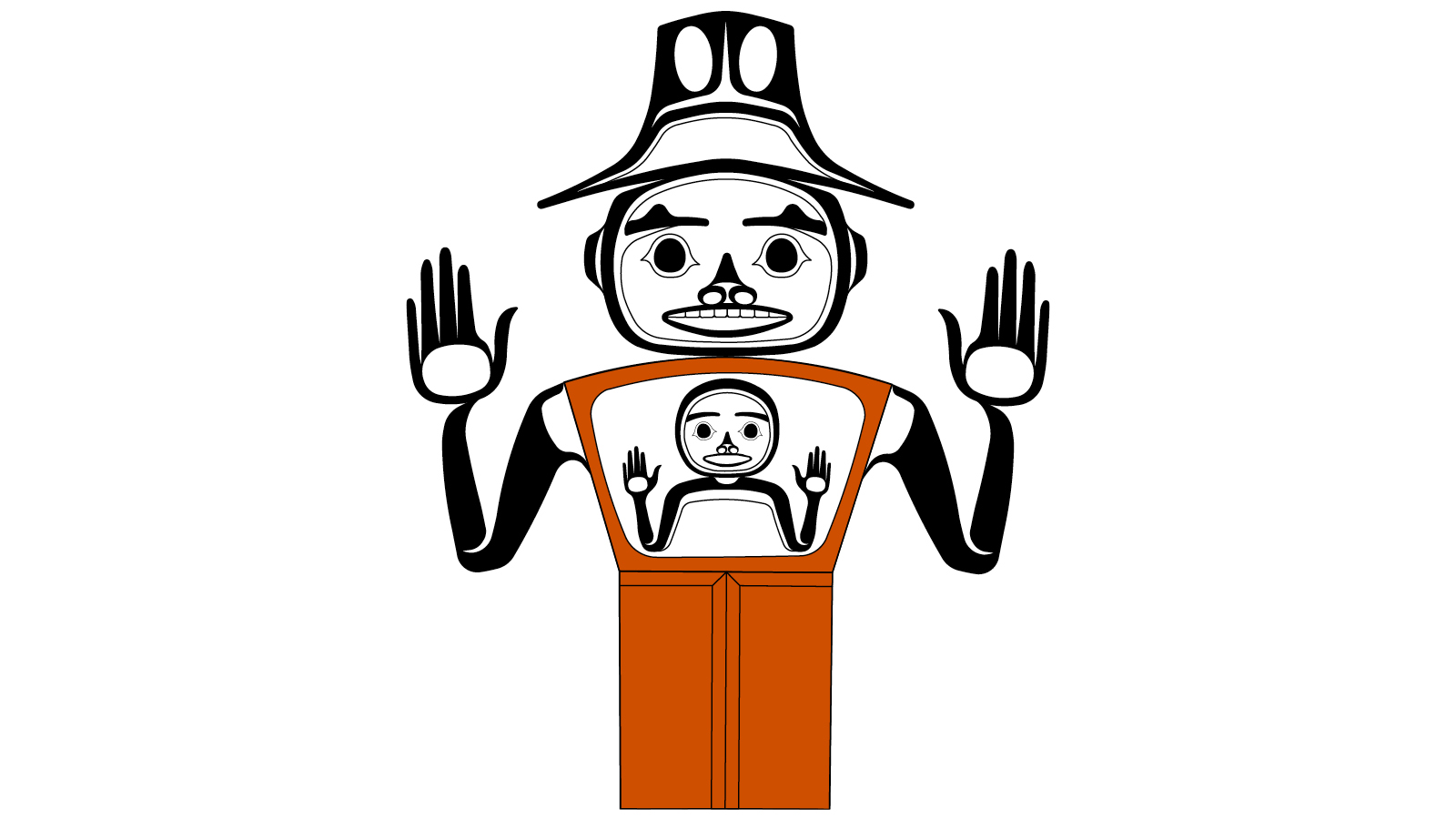This design represents the past, present and future. In my studies, I’ve read that the x°isdun (copper shield) is not only a symbol of wealth but were ancestors and took the shape of their bodies. The main figure is an Elder who has the teachings and knowledge of the ancestors. A child within the Copper Shield is holding their hands in the same position as the Elder, this is to represent the importance of teaching and intergenerational knowledge.
About Nathan Wilson
Nathan Wilson is of both Haisla and British decent and comes from a long line of Haisla carvers and artists. His goal is to keep the carving tradition alive within his family. A graduate of the Freda Diesing School of Northwest Coast Art, Nathan extended his skills as a carver, painter and tool maker. The artwork he creates are inspired by events and understanding the natural world we live in. From encounters with grizzly and black bears, mountain goats and whales to attending feasts and totem pole raising ceremonies, these are all important in finding a deeper meaning to becoming a First Nations Artist. Nathan has carved and completed several large red cedar sculptures as public installations. In 2014, he was commissioned by Mount Elizabeth Secondary
School to carve an 8ft totem pole in the District of Kitimat. This was the first totem pole to be raised in the community in several decades. In 2020-2021, he completed 3 large installations. Two large exterior painting for the Haisla Health Centre in Kitamaat Village, an 8ft cedar sculpture, along with his wife Nakkita Trimble, to commemorate MMIW for the Friendship House in Prince Rupert and a 6ft Mountain Goat sculpture for Coast Mountain College in Terrace, BC.
Today Nathan is an instructor at his alma mater, teaching alongside his mentors Stan Bevan, Ken McNeil and Dempsey Bob. Nathan continues to create masks, sculptures and relief carved panels for various galleries, as well as private commissions with various collectors.




